#F. W. Woolworth Building
Explore tagged Tumblr posts
Text

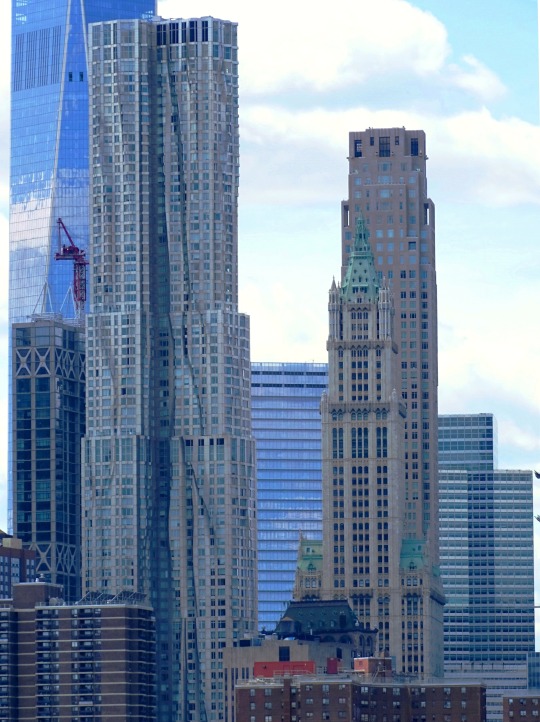




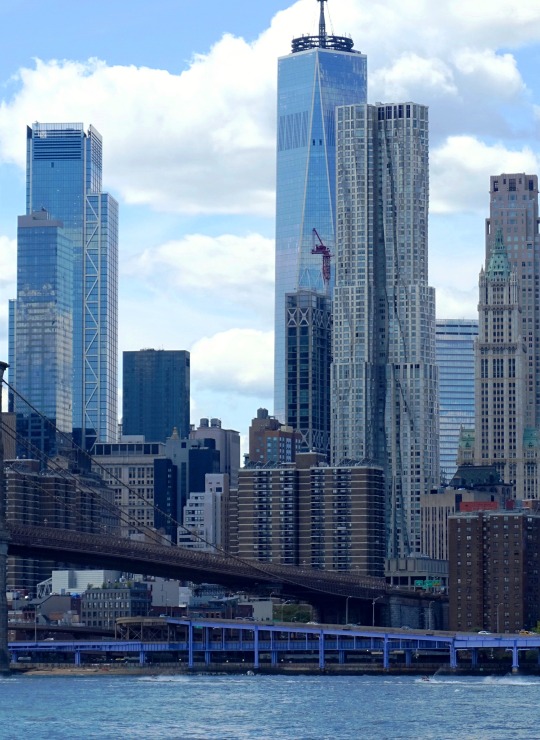

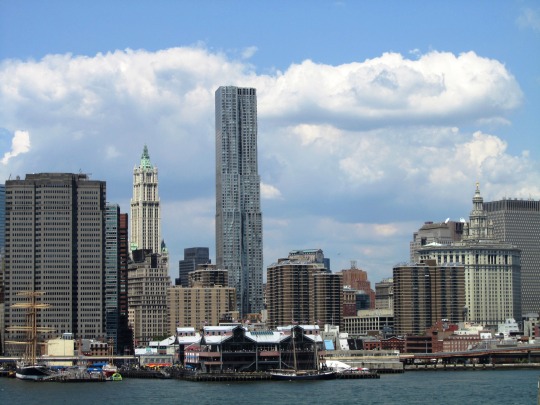
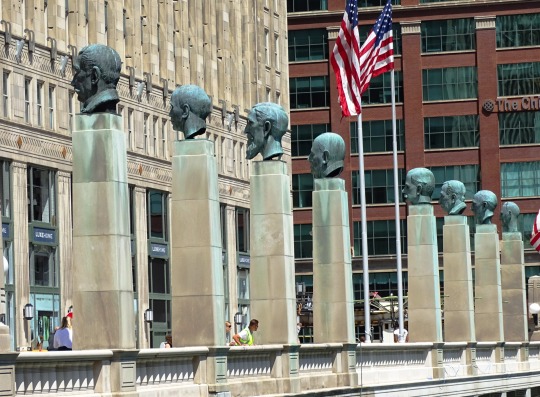


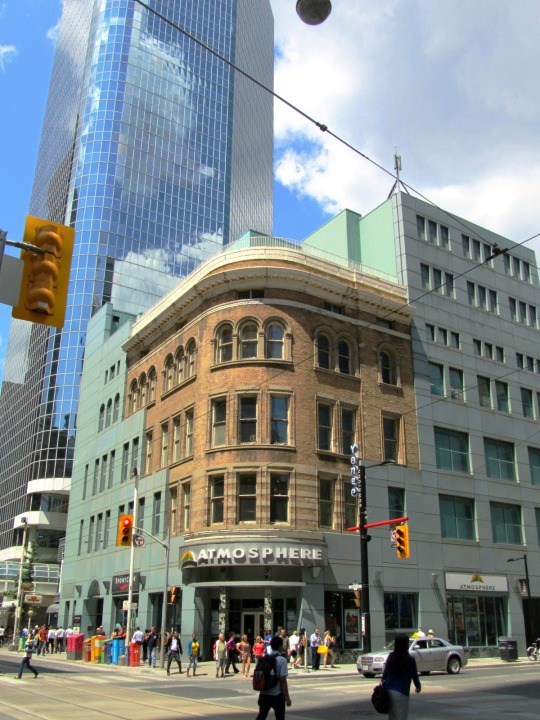
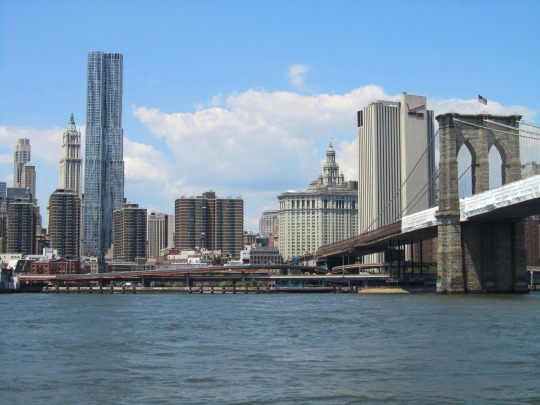

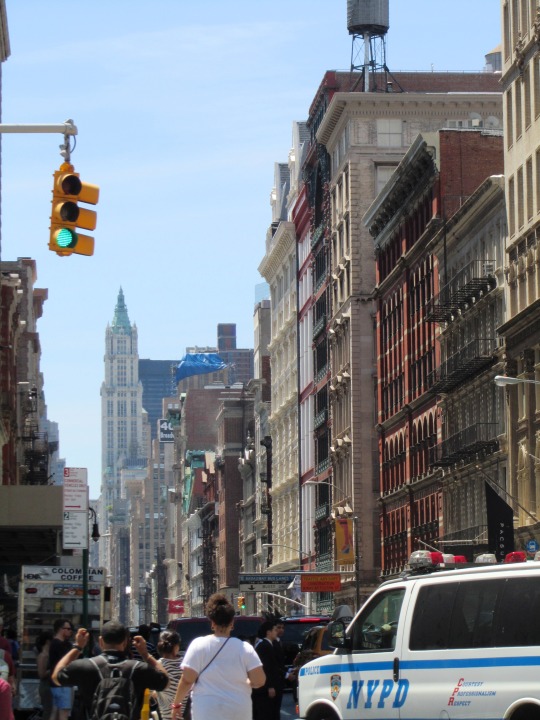
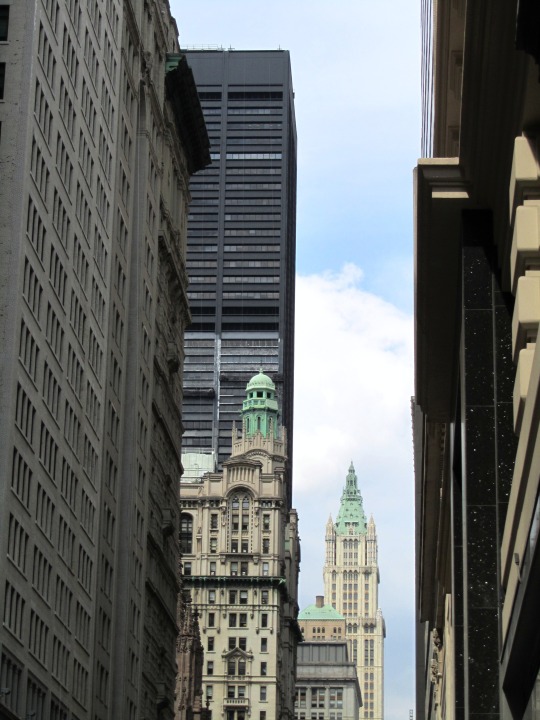
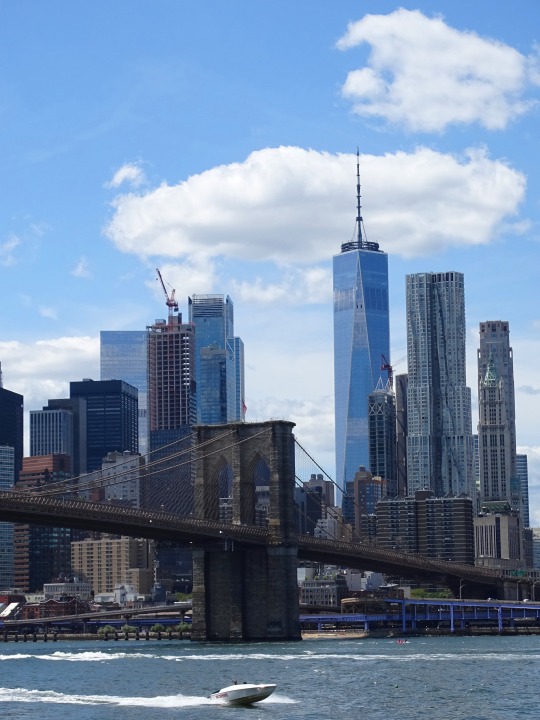



In Utica, New York, Frank Woolworth opened the first of many of five-and-dime Woolworth stores on February 22, 1879.
#Frank Winfield Woolworth by Milton Horn#Frank Woolworth#opened#first Woolworth store#22 February 1879#145th anniversary#US history#F. W. Woolworth Building#Cass Gilbert#Manhattan#neo-gothic#cityscape#architecture#skyline#skyscraper#East River#New York City#USA#summer 2013#Yonge Street#Toronto#Canada#summer 2015#travel#landmark#tourist attraction#original photography#vacation#Ontario#2019
5 notes
·
View notes
Text

F. W. Woolworth's Building; International Civil Rights Center & Museum
Surfing around I saw this photo out of the corner of my eye. I knew exactly where it was taken and its significance. I was kinda shocked.
The photo link is to a page at The Civil Rights Trail, The Civil Rights Center and Museum are in Greensboro. There's a short video of Robert Petterson talking about the lunch counter sit-ins in 1960. Four freshmen students at North Carolina Agricultural and Technical State University--Aggies--led the demostrations: and became known at the Greensboro Four : David Richmond, Franklin McCain, Ezell A. Blair, Jr., and Joseph McNeil.
I was pretty little in 1960, I am not even sure we had a televison set at home. That those stools at Woolworth"s are so iconic to me shows how powerful the movement of sit-ins were. Certainly I'm old enough to remember racist segregation. The thousands of young people who participated in sit-ins inspired me as a lad. I knew they were creating something good. At least trying to make living better for all of us.
19 notes
·
View notes
Photo

Intersection at Queen and Yonge, Toronto, circa 1935
0 notes
Photo

#GorgeousOldHomes #Repost @circahouses with @make_repost ・・・ A fortune built on nickels and dimes -- it's the F.W. Woolworth mansion! (AUCTION / Glen Cove, NY) - From the listing with [email protected]: AUCTION | By Order of the Estate of Martin T. Carey “Winfield Hall” Former F. W. Woolworth Estate Previously Asking $19.95M | Guaranteed Minimum Bid $7M Former F. W. Woolworth Estate | Numerous Possibilities – Renovate, Repurpose, or Subdivide – 47,098+/- Sq. Ft. on 16.4+/- Acres – Grand 32,098+/- Sq. Ft. mansion with 12 bedrooms designed by the renowned architect, Charles Gilbert – Clock Tower building with ample room for the Car Collector! 15,000+/- Sq. Ft. with garage capacity for 11+/- cars – Sweeping lawns adorned with classic statuary – Once in a lifetime opportunity to rehabilitate an existing Gilded Age Mansion – one of the few remaining privately owned estate homes of this era – 2-Acre zoning offers a possible exclusive residential enclave Property Previews: Sunday June 20th and Sunday June 27th By Appointment Only (Call 888-299-1438 for an Appointment or Email [email protected])�� Online Auction concludes Wednesday, July 14, 2021 at 11:00AM - #circaoldhouses #oldhouses #dreamhouse #circaoldhousesny https://www.instagram.com/p/CQbZhGTAHlr9tVE2UBAuyiQ6sTlpKLzbGGrx1U0/?utm_medium=tumblr
1 note
·
View note
Photo

The hidden pool inside the Woolworth Building that once belonged to the building's owner and developer Frank W. Woolworth, was recently restored and unveiled this week! The pool has always been a mystery to skyscraper enthusiasts, sitting drained and abandoned for the last two decades. The 'Cathedral of Commerce" as the Woolworth was known, was built in 1913 – at the time the tallest building in the world – for American retail giant, the F. W. Woolworth Company. When designing the tower, Woolworth and his architect Cass Gilbert planned to include a swimming pool and Turkish bath in the basement, lined with marble. Some accounts say the amenities were actually included to attract tenants to the building at a time when there was a surplus of commercial office space in Lower Manhattan, not for Woolworth's personal use. A prospectus on the building from 1913 lists the pool and bath along with the building's other features. The 15-by-55-foot pool was drained in 1999, only to be recently restored by Alchemy Properties, who has converted the top thirty stories of the tower for thirty-three luxury rresidences. This week we got to visit the pool, which had just received its permits to operate. #woolworthbuilding #woolworthresidences #skyscraper #skyline #hiddennyc #manhattan #newyorkcity #nyc #downtownnyc #parkrow #cathedralofcomerce #alchemyproperties #woolworth #cassgilbert #architect #architecture #urbannism #nycurbanism #nyhistory #nychistory (at Woolworth Building) https://www.instagram.com/p/B3xeyY0nsfX/?igshid=3tbmss1fwzot
#woolworthbuilding#woolworthresidences#skyscraper#skyline#hiddennyc#manhattan#newyorkcity#nyc#downtownnyc#parkrow#cathedralofcomerce#alchemyproperties#woolworth#cassgilbert#architect#architecture#urbannism#nycurbanism#nyhistory#nychistory
26 notes
·
View notes
Photo

You’ll Shoot Your Eye Out, Kid!
In the spirit of wishing you all a safe holiday gift-giving season, we present to you a court case about the patent infringement of a rather popular toy of the late 1950s, guns that vibrated to simulate rapid fire rifles. This shootout involved a standoff between popular cap gun manufacturers, Mattel, Marx Toys and F. W. Woolworths, noted five-and-dime. Mattel claiming that Marx had infringed on the invention for a vibrating rifle patented by John W. Ryan on June 30, 1959 (2,892,289) that they were using to build their Thunderburp series of rifles.

Woolworth’s pushed back that Ryan was not the “first, original, or sole inventor or discoverer of” anything new or novel in the rapid-fire toy gun market, and in fact, the patent contained “common knowledge on the part of those skilled in the art” of toy rifle creation.


Judge Leon R. Yankwich issued his opinion based on the specifics of language in the patent, which used the phrase “oscillating inertia means;” The patents by Karel J. Staller, filed on August 18, 1959 (2,899,766) and H. C. Douglas, filed on April 30, 1957 (2,790,260), on which Marx’s rifles were based, achieved their results by “rotation or reciprocation” and therefore did not infringe.

Whatever the legal shots amounted to, we wish you and yours a safe and happy holiday season.
Series: Civil Case Files, 1938-2003. Record Group 21: Records of District Courts of the United States, 1685-2009. (National Archives Identifier 294938).
Check out this video!
6 notes
·
View notes
Photo

This building marks the emergence of the retail giant F. W. Woolworth in Seattle after the Great Depression in 1940. This elderly building is being fitted with a new N95 wall to prevent the highly contagious virus from attacking this compromised structure. Hopefully this drastic measure will prevent the current retailer from succumbing to the current pandemic. Social distancing for buildings. #socialdistancingforbuildings (at Seattle, Washington) https://www.instagram.com/p/B-PDr3rHPH-/?igshid=1soyhcfqy31n4
0 notes
Text
BETWEEN THE BRIDGES
A few years ago I did a feature on Manhattan between the Manhattan and Brooklyn Bridges (I call it BEMBO), but as always, there’s more to see and there are details I missed. This time of year I also begin to scout areas that would make decent Forgotten NY tours in the spring and summer. BEMBO is a curious area, full of crannies and nooks of interest. Had I been writing Forgotten New York in the 1960s, there would have been a lot more to talk about, as maybe half of this neighborhood has been razed to build housing projects, schools, and the NYPD headquarters. I was able to show some of these lost streets in a FNY post in January 2019.
Getting off the F train at East Broadway at Canal (Straus Square) I meandered west. I discussed the Mesivtha Tiferes Jerusalem Yeshiva just the other day, so I won’t repeat myself here; it’s a handsome building in buff and brown brick, and has a venerable history.
East Broadway, looking west, looking toward the Manhattan Bridge overpass, and behind it, the Municipal Building and Woolworth Building, which from this vantage look like twin spires of the same building. In the left background is #4 World Trade Center and on the right, of course, is #1 World Trade Center. In the foreground left is the relatively new 109 East Broadway, the site of a devastating fire in 2010. The building exhibits the latest trend in residential architecture, featuring a boxy design with colored metal panels and flat windows. Why do so many new apartment buildings looks like this? They’re the cheapest to build.
In FNY’s Comments section, and remarks from friends on facebook, twitter and in person, many dismiss new architecture outright, saying nothing built today matches the past. I judge each building on its merits, and part of me is happy to live in a dynamic city that can accommodate new designs. I like a city that has both a Jenga tower and a St. Patrick’s Cathedral.
Until the beginning of the 20th Century, East Broadway was known as Chatham Street, for William Pitt, Earl of Chatham (1708-1778) who was the English Prime Minister during the time the colonies were agitating for independence, but before the Revolutionary War. He opposed the Stamp Act, but also opposed outright independence, but promoted compromise that ultimately proved untenable. Many USA locales are named for him including Pittsfield, MA and Pittsburgh, PA, as well as Chatham Square, East Broadway at the Bowery.
No good way to get a picture of the Knickerbocker Post Office, 128 East Broadway near Pitt Street because of … all the mail trucks parked in front of it.
Washington Irving (1783-1859), who met his namesake George Washington while a young boy, was popular both in the States and in Europe for his essays and fiction, and was the creator of Ichabod Crane, Rip van Winkle, and the tricornered Father Knickerbocker, NYC’s mascot. “Knickerbocker,” which is fun to say, refers to NYC’s early Dutch settlers and appears frequently in NYC lore, including its NBA basketball team.
The Sung Tak Buddhist Association at 13 Pike Street was once the Pike Street Synagogue, a Classic Revival building from 1903 that housed the Congregation Sons of Israel Kalwarie, Poland. Entertainer Eddie Cantor was bar mitzvahed here in 1905. The tripartite façade, which has an arched portico reached by twin lateral staircases, reflects Romanesque and classical features.
Looking north on Pike Street, which was named for explorer Zebulon Pike, soldier and explorer (1779-1813) of Pike’s Peak fame. Along with Allen Street, which begins a block north, the road was widened several decades ago and now sports a modern bicycle path. You can walk in a straight line all the way from here to the Harlem River, as Pike becomes Allen and Allen becomes 1st Avenue.
Turning left on Market Street, I encountered one of the oldest churches in Manhattan at Henry Street, the old Market Street Reformed Church, which was built in 1819. The windows are made up of multiple panels—35 over 35 over 35. This is now the First Chinese Presbyterian Church, which shared the building with the Sea and Land Church until 1972.
The brick and stone Georgian-Gothic church was constructed two centuries ago as the Market Street reformed Church on land owned by Henry Rutgers, and after changing congregations a few times over the years, it’s now the First Chinese Presbyterian Church. It’s in the top five oldest extant church buildings in New York City, the oldest being St. Paul’s Chapel on Broadway and Vesey St.
Every time I’m in the area, I check on Mechanics Alley, which runs on the west side of the Manhattan Bridge anchorage for 2 blocks between Madison and Henry Streets. Though it has obtained a more narrow sense, the word “mechanic” originally meant an artisan, builder or craftsman, not necessarily a machinist. No property fronts on the narrow lane, but trucks nonetheless employ it despite its narrowness to avoid heavier traffic on streets like Market.
I did a pretty comprehensive post on Mechanics Alley and its history a few years ago in FNY.
Market Street contains a number of historic and classic buildings along its short stretch between East Broadway and South Street. Here’s #40 market on the corner of Madison, which still has its original entrance woodwork as well as the street identification brownstone plaques. The Market Street side looks as if it has had some ad hoc repairs done sometime in the past.
375 Pearl Street, otherwise known as the Verizon Building, a.k.a. the Intergate Center, looms at the west end of Monroe Street. Many call it the ugliest building in Manhattan, though I’ve seen far worse. In 2016 it was renovated and received a new bank of windows.
This shabby brick building at 51 Market St. was constructed in 1824 by merchant William Clark. Its original elegant doorway, with Ionic columns, a fanlight and ornamentation, has survived nearly two centuries. A close look at the basement windows shows them to be surrounded with brownstone work with squiggly lines, known in the architecture world as “Gibbs surrounds.” A fourth floor, which studiously copied the original three, was added after the Civil War. The stoop and railings, however, are not original as they were replaced in 2010. The door is festooned with graffiti, and though the house has Landmark status, its condition appears deteriorated.
Amid the Chinese-language signs on Market and Madison, at the edge of Chinatown, is this neon sign for a long-gone liquor store.
At #47 Market Street is a venerable brick building that conveniently lists the date of construction, 1886, at the roofline.
Faces peer out from the front of this Madison Street apartment. Many of these buildings, and those on paralleling Monroe and Henry Streets, were built in the 1880s, when such embellishments were found on just about every building, commercial or residential.
The undulating exterior of #8 Spruce Street, officially New York By Gehry, named for architect Frank Gehry, is the architect’s signature NYC building. Like it or not, it’s instantly recognizable from all over lower Manhattan. After its completion in 2011, it was NYC’s tallest residential building for a couple of years, but has since been surpassed by buildings like 432 Park.
The Roman Catholic parish of St. Joseph (“San Giuseppe”) was established by the Missionaries of St. Charles, an order of priests and brothers founded by Blessed John Baptist Scalabrini in 1887 to serve the needs of Italian immigrants. The present church was designed by Matthew W. Del Gaudio and opened in 1924. Shortly after the founding of the parish, the Scalabrinians were joined by the Apostles of the Sacred Heart of Jesus, who helped open St. Joseph School in 1926.
Today, St. Joseph Church is a national parish designated as an Italian and Chinese parish. The parish continues the mission of the Church of St. Joachim, located at 26 Roosevelt Street until the 1960s, which was founded by the Missionaries of St. Charles who arrived in New York City in 1889. Immediately after, Mother Cabrini was welcomed by the same church as she arrived in the United States. American Guild of Organists, NYC Chapter
Speaking of the Scalabrinians, in January 2018 I visited their former bailiwick, St. Charles Seminary in Todt Hill, Staten Island, which had been the estate of architect Ernest Flagg.
Catherine Street classics, near Madison Street.
Madison and Oliver Streets. Al Smith (1873-1944), a four-time NYS governor and failed presidential candidate, was born on Oliver, a still-existing street between the Brooklyn and Manhattan Bridges, neither of which had opened when he was born. He was one of NYC’s most popular politicians in history.
On a walk up the Lower East Side in January 2013, I encountered an anachronistic building that I either hadn’t seen or hadn’t noticed before, on Madison Street a few doors away from St. James Place. It’s a tiny two-story dormered building — however, it’s not too small that it doesn’t have two separate doors and two separate house numbers, 47 and 49. I’ve always been curious about anachronisms and survivors, being something of an anachronism myself, so I looked it up. Expecting a difficult or fruitless search, I found something by the historian David Freeland, who rote about it in 2009 in the now-defunct New York Press:
For years the house has been something of a mystery, but one glimpse into its colorful history is revealed through a small advertisement from the Spirit of the Times newspaper, as reprinted in the Boston Herald of March 2, 1853: “Rat Killing, and other sports, every Monday evening. A good supply of rats kept constantly on hand for gentlemen wishing to try their dogs, with the use of the pit gratis, at J. Marriott’s Sportsman’s Hall, 49 Madison Street.”
Rat baiting, setting rats against rats, or dogs against rats, was a popular betting sport in the 19th Century in the days before the ASPCA. The building where another former rat baiting establishment was run by Kit Burns, the Captain Joseph Rose House, still stands at 273 Water Street in the Seaport area.
Freeland goes on:
By the late 1850s, the house at 49 Madison Street had been taken over by English-born Harry Jennings, who ran it as a combination saloon and rat-fighting pit until his conviction on a robbery charge sent him to prison in Massachusetts. But later, after returning to New York, Jennings settled into a kind of respectability, winning fame as a dog trainer and, eventually, the city’s leading rat exterminator. By the time of his death, in 1891, Jennings’ clients included Delmonico’s Restaurant and such luxury hotels as Gilsey House and the original Plaza.
Apparently, there’s a comeback in everybody.
The dark shadows of January intrude on the intersection of James and Madison Streets, one of the few intersections in NYC where both street names make up a US President’s first and second name. I’m sure it wasn’t planned that way, though.
We can see St. James Church, the second oldest building associated with the Roman Catholic Church in NYC. (Old St. Patrick’s Cathedral, Mott and Prince Streets, built in 1810, precedes it.) The fieldstone, Doric-columned Greek Revival building was begun in 1835 and completed in 1837; and though it is thought to be a design of famed architect Minard Lefever, there is no evidence to support the claim. A domed cupola above the sanctuary was removed decades ago. This was the boyhood parish of Al Smith, and New Bowery, which connects Pearl Street and Chatham Square, was renamed for it in 1947.
The massive Chatham Green development, located along St. James Place between Madison Street and Chatham Square, opened in 1960, was one of the projects that eliminated much of the ancient street grid in lower Manhattan, as well as the last remnants of the Five Points slum. But on those streets were located dark, noisome and cold tenements, and Chatham Green was constructed by the City in an effort to make middle-income peoples’ lives better. As we know, that effort has had mixed results.
Chatham Green went condo several years ago, with hefty prices, somewhat belying its original purposes.
This triangular-shaped building comes to a point at St. James Place and Madison Street. As I have noted, St. lames Place, laid out in the mid-1850s, was originally called New Bowery, but the designation must have been fluid at one time, as the chiseled street sign on the building simply has “Bowery.”
One Police Plaza, along Madison Street and Park Row (both closed to regular traffic) opened in 1973, is the headquarters of the NY Police Department; it took over from the old domed HQ, now a condo conversion at Centre and Broome Streets. It was designed by Gruzen and Partners in a Brutalist style and sits near the assorted city and state court buildings at Foley Square.
The NYC Municipal Building was constructed in 1914 from plans by McKim, Mead & White; it now houses only a fraction of the city offices that oversee the functioning of the metropolis. Particularly attractive is the row of freestanding columns, the extensive sculpture work and the lofty colonnaded tower topped by Adolph Weinman’s 25-fot high gilt statue of Civic Fame.
I have happy memories of the building since on October 23, 2006 I spent a half hour with Brian Lehrer on WNYC-radio discussing Forgotten NY the Book, and temporarily, my Amazon sales jumped into the 500s (by contrast, 12 years later, I’m in the 300,000s usually).
The sculptures on the north arch include allegorical representations of Progress, Civic Duty, Guidance, Executive Power, Civic Pride and Prudence. Between the windows on the second floor are symbols of various city departments. Note the collection of plaques, among which is the “triple X” emblem of Amsterdam, Holland. Chambers Street once passed through the building and once went all the way to Chatham Square but the NYC Police Dept complex was built over its path in the 1960s. —Gerard Wolfe
The fortress-like, business-themed Murray Bergtraum High School was built at Madison Street and Robert F. Wagner Senior Place, adjacent to Brooklyn Bridge off-ramps, in 1976. It’s named for a former president of the NYC Board of Ed., between 1969 and 1971. Noted alumni include entertainers John Leguizamo and Damon Wayans.
Rose Street, once chockablock with tenements, is a curved street running under the Brooklyn Bridge connecting Gold and Madison Streets. It was named for late 18th-early 19th Century merchant and distiller Captain Joseph Rose, whose house still stands nearby on Water Street. I discussed Rose Street at length on this FNY page.
Though I continued into the Seaport area, it’s a busy weekend and I’ll wrap things up for now.
Please help contribute to a new Forgotten NY website
Check out the ForgottenBook, take a look at the gift shop, and as always, “comment…as you see fit.”
1/6/19
Source: http://forgotten-ny.com/2019/01/between-the-bridges/

0 notes
Photo

The Woolworth Building is Cass Gilbert's best-known tall building and one of the most famous skyscrapers in the United States. When it was completed in 1913, it was the tallest building in the world and a potent symbol of the F. W. Woolworth Company. The 60-story tower with its terra-cotta cladding and neo-Gothic ornament helped to transform the skyline of New York. At the grand opening on April 24, 1913, President Woodrow Wilson pressed a button to signal the lighting of the structure, and the Rev. S. Parkes Cadman dubbed it the "Cathedral of Commerce." The Woolworth Building was the last major skyscraper constructed in New York before World War I. Its romantic tower form helped to establish the prototype for a group of skyscrapers built in the 1930s. Image Courtesy: Cass Gilbert Society #civil #structures #renovation #architecture #engineering #design #innovation #concept #art #construction #technology #engineers #contractors #architects #landscape #facade #constructiontechniques #interiordesign #architecturephotography #cityscape #buildings #arquitectura #sustainability #woolworths #newyorknewyork (at New York, New York) https://www.instagram.com/p/Bwl9YfkhbL_/?utm_source=ig_tumblr_share&igshid=f2xv5yv8dcz
#civil#structures#renovation#architecture#engineering#design#innovation#concept#art#construction#technology#engineers#contractors#architects#landscape#facade#constructiontechniques#interiordesign#architecturephotography#cityscape#buildings#arquitectura#sustainability#woolworths#newyorknewyork
0 notes
Photo










In Utica, New York, Frank Woolworth opened the first of many of five-and-dime Woolworth stores on February 22, 1879.
#Frank Woolworth#opened#first Woolworth store#22 February 1879#anniversary#us history#Trinity Building#F. W. Woolworth Building#travel#Manhattan#Cass Gilbert#neo-Gothic style#architecture#facade#usa#New York City#summer 2018#I'll be back next summer#2013#One World Trade Center#cityscape#landmark#tourist attraction#skyline#skyscraper
3 notes
·
View notes
Photo

The original home for F. W. Woolworth Building at 233 Broadway in Lower Manhattan,open in 1913.#skyscraper #fwwoolworth #woolworthbuilding (at Woolworth Building) https://www.instagram.com/p/BucOF1XBf6s/?utm_source=ig_tumblr_share&igshid=w7fhymxjff8k
0 notes
Link
A pack of attacking startups sounds something like a pack of ravenous hyenas, but, generally, the rhetoric of disruption—a language of panic, fear, asymmetry, and disorder—calls on the rhetoric of another kind of conflict, in which an upstart refuses to play by the established rules of engagement, and blows things up. Don’t think of Toyota taking on Detroit. Startups are ruthless and leaderless and unrestrained, and they seem so tiny and powerless, until you realize, but only after it’s too late, that they’re devastatingly dangerous: Bang! Ka-boom! Think of it this way: the Times is a nation-state; BuzzFeed is stateless. Disruptive innovation is competitive strategy for an age seized by terror.
[...]
EEvery age has a theory of rising and falling, of growth and decay, of bloom and wilt: a theory of nature. Every age also has a theory about the past and the present, of what was and what is, a notion of time: a theory of history. Theories of history used to be supernatural: the divine ruled time; the hand of God, a special providence, lay behind the fall of each sparrow. If the present differed from the past, it was usually worse: supernatural theories of history tend to involve decline, a fall from grace, the loss of God’s favor, corruption. Beginning in the eighteenth century, as the intellectual historian Dorothy Ross once pointed out, theories of history became secular; then they started something new—historicism, the idea “that all events in historical time can be explained by prior events in historical time.” Things began looking up. First, there was that, then there was this, and this is better than that. The eighteenth century embraced the idea of progress; the nineteenth century had evolution; the twentieth century had growth and then innovation. Our era has disruption, which, despite its futurism, is atavistic. It’s a theory of history founded on a profound anxiety about financial collapse, an apocalyptic fear of global devastation, and shaky evidence.
Most big ideas have loud critics. Not disruption. Disruptive innovation as the explanation for how change happens has been subject to little serious criticism, partly because it’s headlong, while critical inquiry is unhurried; partly because disrupters ridicule doubters by charging them with fogyism, as if to criticize a theory of change were identical to decrying change; and partly because, in its modern usage, innovation is the idea of progress jammed into a criticism-proof jack-in-the-box.
This is just so good, on so many levels. Great writing, great characterization of the pack mentality of disruptionists and the fear of failure underlying it, and the depiction of Christensen carefully cherry-picking examples to help make his case about industry disruption, and ultimately coming up with zero. She says that Seagate, the manufacturer of disk drives -- Christensen’s central example -- was not ‘disrupted’. In fact the companies dominating the industry today are the same companies that led int he 1980s.
Christensen’s sources are often dubious and his logic questionable. His single citation for his investigation of the “disruptive transition from mechanical to electronic motor controls,” in which he identifies the Allen-Bradley Company as triumphing over four rivals, is a book called “The Bradley Legacy,” an account published by a foundation established by the company’s founders. This is akin to calling an actor the greatest talent in a generation after interviewing his publicist. “Use theory to help guide data collection,” Christensen advises.
He finds further evidence of his theory in the disruption of the department store by the discount store. “Just as in disk drives and excavators,” he writes, “a few of the leading traditional retailers—notably S. S. Kresge, F. W. Woolworth, and Dayton Hudson—saw the disruptive approach coming and invested early.” In 1962, Kresge (which traces its origins to 1897) opened Kmart; Dayton-Hudson (1902) opened Target; and Woolworth (1879) opened Woolco. Kresge and Dayton-Hudson ran their discount stores as independent organizations; Woolworth ran its discount store in-house. Kmart and Target succeeded; Woolco failed. Christensen presents this story as yet more evidence of an axiom derived from the disk-drive industry: “two models for how to make money cannot peacefully coexist within a single organization.” In the mid-nineteen-nineties, Kmart closed more than two hundred stores, a fact that Christensen does not include in his account of the industry’s history. (Kmart filed for bankruptcy in 2002.) Only in a footnote does he make a vague allusion to Kmart’s troubles—“when this book was being written, Kmart was a crippled company”—and then he dismisses this piece of counter-evidence by fiat: “Kmart’s present competitive struggles are unrelated to Kresge’s strategy in meeting the original disruptive threat of discounting.”
In his discussion of the steel industry, in which he argues that established companies were disrupted by the technology of minimilling (melting down scrap metal to make cheaper, lower-quality sheet metal), Christensen writes that U.S. Steel, founded in 1901, lowered the cost of steel production from “nine labor-hours per ton of steel produced in 1980 to just under three hours per ton in 1991,” which he attributes to the company’s “ferociously attacking the size of its workforce, paring it from more than 93,000 in 1980 to fewer than 23,000 in 1991,” in order to point out that even this accomplishment could not stop the coming disruption. Christensen tends to ignore factors that don’t support his theory. Factors having effects on both production and profitability that Christensen does not mention are that, between 1986 and 1987, twenty-two thousand workers at U.S. Steel did not go to work, as part of a labor action, and that U.S. Steel’s workers are unionized and have been for generations, while minimill manufacturers, with their newer workforces, are generally non-union. Christensen’s logic here seems to be that the industry’s labor arrangements can have played no role in U.S. Steel’s struggles—and are not even worth mentioning—because U.S. Steel’s struggles must be a function of its having failed to build minimills. U.S. Steel’s struggles have been and remain grave, but its failure is by no means a matter of historical record. Today, the largest U.S. producer of steel is—U.S. Steel.
[...]
Disruptive innovation is a theory about why businesses fail. It’s not more than that. It doesn’t explain change. It’s not a law of nature. It’s an artifact of history, an idea, forged in time; it’s the manufacture of a moment of upsetting and edgy uncertainty. Transfixed by change, it’s blind to continuity. It makes a very poor prophet.
18 notes
·
View notes
Photo

After barely more than two years of design & construction, the Woolworth Building opened today in 1913. Designed by Cass Gilbert in the neo-Gothic style, the 60 story tall (792 feet) was the tallest building in the world. On the evening of April 24, 1913, it became the first building with build in exterior lighting - and President Woodrow Wilson turned on the lights with a button in Washington DC! Nicknamed “The Cathedral of Commerce” by Reverend S. Parkes Cadman in 1916, it remained the tallest building in the world until 1930. Built at the behest of Frank W Woolworth (1852-1919), founder of the legendary dimestore “F. W. Woolworth Company”, he was the first to use self-service display cases, so customers could choose what they wanted to purchase without assistance of a sales clerk. Frank Woolworth paid the $13.5 million to build the Woolworth Building in cash. Photograph: Woolworth Building in 1913. The Pictorial News Co, N.Y. No NN 98 Library of Congress, LC-USZ62-127214 #bigoniontours #todayinhistory #cassgilbert #woolworthbuilding #neogothic #nychistory #nycarchitecture #woodrowwilson via ✨ @padgram ✨(http://dl.padgram.com) https://www.instagram.com/p/BTRnlwMjZmj/
2 notes
·
View notes
Text
The Chase Files Daily Newscap 2/12/2019
Good Morning #realdreamchasers. Here is your daily news cap for Monday, December 2nd, 2019. There is a lot to read and digest so take your time. Remember you can read full articles via Barbados Government Information Service (BGIS), Barbados Today (BT), or by purchasing a Daily Nation Newspaper (DN).
SUNDAY SHOPPERS TURN OUT IN DROVES – As shoppers thronged the streets in Bridgetown yesterday seeking early Christmas bargains, some store operators said they were looking forward to the holiday season after less than ideal Black Friday sales. Most of the stores opened around noon for the start of Christmas Sunday shopping and managers reported a healthy flow of customers, with shoppers in search of items such as table mats, curtains, bed sheets, cutlery and Yuletide ornaments. At F. W. Woolworth, manager Martin Bryan said he was hoping for an increase in sales. He said the store did not perform as well as last year for the Black Friday discounts, and attributed it to the tough economic times. (DN)
SAND, SEA AND BROKEN TRIDENT – There’s a Broken Trident in the waters off Drill Hall. And those who sunk it hope it will become one of the island’s newest reefs with thriving corals. Just over a week ago, a number of divers got together and sank a 12 feet by nine feet statue of the Broken Trident just off Drill Hall Beach in St Michael. Yesterday and Saturday they started the process of creating a new reef by attaching rescued and broken off bits of stag horn corals to stainless steel nails on its frame. Marine biologist and owner of Barbados Blue Dive Shop, Andre Miller, was one of the divers who participated in the project. (DN)
STD FIGURES RISING – Director of the HIV/AIDS Commission, Dr Jaqueline Wiltshire, says sexual-transmitted diseases are on the rise, with the hard economic times one of the factors negatively impacting the sexual habits of some Barbadians. Speaking to the media yesterday after a service at St Michael’s Cathedral to mark World AIDS Day, Wiltshire, while not giving numbers, said some of the sexual activities people were engaging in were of high concern to the commission. “There are some issues we find worrisome, such as the statistics as it relates to the increase of multi-partnering and the age at which people make their sexual debut. “The reasons behind these behaviours are multifaceted. Some of them are cultural practices and some are linked to the recession. During a recession, you have more transactional sex and inter-generational sex.” (DN)
CHANGES IN PETROLEUM PRICES – Effective midnight Sunday, December 1, the retail price of gasoline and kerosene will decrease, while the price of kerosene will remain the same. Gasoline will be adjusted from $3.59 per litre to $3.58 per litre, which represents a decrease of 1 cent, and the price of diesel will drop by 5 cents, from $3.08 per litre to $3.03 per litre. The retail price of kerosene will remain at $1.34 per litre. These price adjustments are in keeping with Government’s policy of allowing retail prices to be reflective of those on the international market. (BGIS)
PRIVATE DAY CARE CENTRES MUST REGISTER BY JANUARY 31 - Operators of private day care centres are reminded that the deadline for registering their businesses or renewing their licences is January 31, 2020. Applications for renewal of licences must be accompanied by supporting documents, including a certificate of inspection from the Barbados Fire Service, a certificate of inspection and an appropriate food licence issued by the Ministry of Health and Wellness, and the current medical certificates of all staff. Applicants must also provide the current food handler certificates for all persons handling food and the current Police Certificates of Character for all staff. All new applications and relocations must have the written approval of the Chief Town Planner to operate from the proposed site, and a certificate of registration from Corporate Affairs. All persons are reminded that, according to the Child Care Board Act, it is illegal to operate a day care centre without a certificate of registration from the Child Care Board. Failure to comply with the Board’s regulations may result in closure or a penalty of $500 and/or six months’ imprisonment. For further information, persons are advised to write to The Director, Child Care Board, Fred Edghill Building, Cheapside, St Michael. (BT)
Fogging Schedule December 2 – 6 - The Ministry of Health and Wellness’ fogging programme continues this week in a number of parishes. On Monday, December 2, the districts in St Philip to be fogged are Merricks Tenantry Road, Peat Bay Road, Apple Hall, Apple Hall Terrace, Bottom Bay and environs. The team will return to St Philip on Tuesday, December 3, to fog Culpepper Development, Hillview Road, Marley Vale, Ragged Point, Sealy Hill, St. Catherine and surrounding areas. On Wednesday, December 4, the areas to be sprayed in Christ Church are Harts Gap with Avenues, St. Matthias with Avenues and neighbouring districts. On Thursday, December 5, the team will be in St Michael to fog Connell Road, Rock Road, Clarke Road, Free Hill with Avenues, Boyce Road and environs. St Michael will be targeted again on Friday, December 6, specifically Black Rock, Stanmore Crescent, Ellerslie School Gap, St Stephen’s Hill, Goddard Road, St Stephen’s Housing Area and surrounding areas. Fogging takes place between 4:30 and 7:30 p.m. each day. Householders are reminded to open their doors and windows to allow the spray to enter. (BGIS)
LAWRENCE T. GAY PRIMARY REOPENS TODAY – The Lawrence T. Gay Memorial Primary School, located at Spooners Hill, St Michael, will open today. The Ministry of Education, Technological and Vocational Training received confirmation from the Ministry of Health and Wellness that the environment is safe for teachers and students to return to the compound. This evening, officials from the Ministry of Education met with the Principal, the president of the Parent Teachers Association and the Barbados Union of Teachers representative at the school and held joint discussions with the Chief Medical Officer. Tomorrow, officials from the Ministry of Health and Wellness will be on site to interact with staff and parents to address any questions which they may have regarding last week’s closure. The Ministry of Education will continue to work with the Ministries of Health and Labour to monitor the air quality at the school. (BGIS)
PRIDE FAILED TO ADAPT, SAYS TROTMAN – Barbados Pride’s failure to adapt to different conditions cost them a place in the final of the Colonial Medical Insurance Super50 Cup. That assessment is coming from head coach Emmerson Trotman in the aftermath of their three-wicket semi-final defeat to the West Indies Emerging Players at the Queen’s Park Oval in Trinidad last Thursday night. The Bajans topped Zone ‘A’ of the competition with six wins from eight games in St Kitts but came up short in the semis when they moved their campaign to new turf and were restricted to a modest 119 against their youthful opponents. “We went into the semi-finals as favourites. We played very good cricket in St Kitts. The problem was that we failed to adapt to the conditions. . .,” Trotman told NATIONSPORT. (DN)
MAYNARD, SEALY 10K WINNERS – Adelbert Browne, a man who warmed Barbadians’ hearts over the years with his athletic prowess in long-distance running, was honoured on Saturday with the staging of the Adelbert Browne 10K Run/5K Walk in his hometown of St Philip. Put on by Browne’s employers, the National Sports Council (NSC), the event attracted entrants from serious Olympians to fun-seekers to individuals just keen to honour the lion-hearted athlete. Politicians such as former Member of Parliament, Rudolph “Cappy” Greenidge, current MPs Dr Sonia Browne and John King, along with revered Olympian James Wedderburn, who also hails from St Philip, came out for the event. Several of Browne’s workmates took part in the run or the walk, which also provided an opportunity for serious competitors to warm up for the new athletics season in 2020. (DN)
There are 30 days left in the year Shalom! Follow us on Twitter, Facebook & Instagram for your daily news. #thechasefiles #dailynewscaps #bajannewscaps #newsinanutshell
0 notes
Photo

New Post has been published on http://simplemlmsponsoring.com/attraction-marketing-formula/internet-marketing/napoleon-hills-16-essential-personal-development-strategies/
Napoleon Hill’s 16 Essential Personal Development Strategies
Beginning in 1908, Napoleon Hill would spend the next 20 years personally interviewing over 100 of America’s wealthiest captains of industry, including:
Andrew Carnegie, Henry Ford, Thomas Edison, John D. Rockefeller, Charles M. Schwab, F. W. Woolworth, William Wrigley Jr., Harvey Samuel Firestone, Alexander Graham Bell, even Theodore Roosevelt, among many others.
…literally the “men who built America.”
The project was commissioned by Andrew Carnegie to further young Hill’s ambitions of documenting and teaching the strategies of financial success. Hill was offered no compensation, only the opportunity to meet with Carnegie’s network of the most successful men of the age.
This was the genesis of the personal development genera.
“It’s a shame that each new generation must find the way to success by trial and error when the principles are really clear-cut.” ─ Andrew Carnegie
As stated, Hill would spend the next two decades distilling and systematizing the proven formula for creating phenomenal wealth.
Hill indeed found that success, rather than being a chance occurrence, is actually a relatively simple and repeatable process – a series of steps – that anyone can easily understand and achieve, which can also be applied to attain network marketing success.
In his 1928 masterpiece, The Laws of Success in 16 Lessons (which predates the more well-known 1937 publication, Think and Grow Rich!), he first outlined this formula for financial greatness.
Here is a brief outline of Hill’s 16 “Fundamentals of Success”:
1. The Master Mind
Hill explains that a “Master Mind” is born from the union of two or more minds, and that it requires perfect harmony to survive. Basically, when two or more individuals focus their efforts on a common purpose, they will achieve much more than they ever could on their own.
What this means for you: Have you ever heard the expression, “two heads are better than one?” It’s like talking to a close friend over coffee about starting a new project, and all of a sudden you’re inspired and energized, building on each other’s ideas, and coming up with an actionable plan to accomplish your common goals. The concept of the Master Mind is central to Hill’s teachings, and the only Law he credits himself as discovering. (In fact, it is so important that we’ll return to it later.)
2. A Definite Chief Aim
According to Hill, “a Definite Chief Aim will teach you how to save the wasted effort which the majority of people expend in trying to find their lifework.” It takes a well-coordinated effort to achieve success─whether you’re pursuing network marketing success, or any other kind. In order to properly channel a group’s effort, all individuals must focus on a specific goal in order to attain it.
What this means for you: You can’t get from point A to point B if you don’t know where (or what) point B is. Think about where you want your business to be in a year or two. Are you looking to build a bigger team by the end of the year? Do you want to increase your sales by the end of the month? Figure out what you’re goal is so you can focus all your efforts─and the efforts of everyone within your Master Mind─toward actually achieving it.
3. Self-Confidence
In Hill’s words: “Self-confidence is based upon sound knowledge of what you know and what you can do.” To achieve Self-Confidence you must first eliminate the demon called fear, that voice inside your head whispering, “You can’t do it!” and, “You’re afraid to even try!”
What this means for you: To close a sale, achieve network marketing success, or win a soccer match, you have to believe you can actually do it! Regardless of your goals, and despite how organized your Master Mind might be, you’ll never achieve anything unless you believe in yourself. Self-confidence is a contagious quality that will drive you and all who follow you toward success!
4. The Habit of Saving
According to Hill, “No one may succeed in life without saving money. There is no exception to this rule, and no one may escape it.” The Habit of Saving must replace the Habit of Spending in order for you to attain financial independence.
What this means for you: Unfortunately, most people are in the habit of buying (things they don’t really need). If left unchecked, this habit will drown you in debt before you know it. If you’re serious about achieving financial independence, break the habit of spending all your money before your next paycheck, and build the habit of saving a portion of your income regularly.
5. Initiative and Leadership
In Hill’s words, “Leadership is essential for the attainment of Success, and Initiative is the very foundation upon which this necessary quality of Leadership is built.” Initiative is basically the quality that drives a person to do whatever needs to be done without being told to do it. Those who exercise Initiative with Self-Confidence and a clear purpose in mind are true leaders.
What this means for you: A leader will never force his objectives onto unwilling followers. Lead by example and empower your team members so you can work together to achieve your common goals, whether you wish to build a six-figure income, increase your monthly sales, or build a bigger team.
6. Imagination
In Hill’s own words, “Imagination will stimulate your mind so that you will conceive new ideas and develop new plans which will help you in attaining the object of your Definite Chief Aim.” Initiative drives a leader to move forward, while Imagination allows him to conceive a plan to attain a Definite Chief Aim, bringing the Master Mind closer to achieving its goals.
What this means for you: Using your imagination will provide you with solutions to problems that might stand in the way of your success and financial independence. It allows you to take everything you’ve learned and create new and wonderful combinations that will bring you closer to success. Don’t be afraid to dream!
7. Enthusiasm
According to Hill, “Enthusiasm is a state of mind that inspires and arouses one to put action into the task at hand.” Enthusiasm is to a person what steam is to a locomotive; it is a moving force that triggers action. Furthermore, it is a vital factor in salesmanship as well as public speaking, and it affects the enthusiast as well as all those who come in contact with him.
What this means for you: Time ceases to exist when you’re doing something with Enthusiasm; any task will feel simple to you, regardless of how difficult, monotonous or dull it may seem to others. If you’re having trouble writing a blog post, creating an ad, or recording a video for your YouTube channel, inject some enthusiasm into it by visualizing how much closer you’ll be to achieving your goals once you’ve completed the task that lies before you.
8. Self-Control
In Hill’s words, “Enthusiasm is the vital quality that arouses you to action, while self-control is the balance wheel that directs your action so that it will build up and not tear down.” A well-balanced person is one whose Enthusiasm and Self-Control are equalized.
What this means for you: Controlling your emotions when a potential customer points out a design flaw in your company’s products, or keeping a positive mindset when you feel overwhelmed by self-doubt is what Self-Control is all about. Channel your enthusiasm toward attaining your ultimate goal, and always keep your eyes on the prize rather than retreating into or maintaining your comfort zone.
9. The Habit of Doing More Than Paid For
According to Hill, “Those who render more service and better service than that for which they are paid sooner or later receive pay for much more than they actually do.” He also states that no one can become a real leader without making this habit a part of his everyday life.
What this means for you: Do you have a blog or website? If so, it might seem that visitors aren’t spending a dime to read your content, but this is not the case. People who read your posts are spending their time (which they can never reclaim). They expect to get something in return, even if it’s just a few minutes of entertainment, a funny joke, or a quick tip about how to use Facebook PPC more efficiently. Always exceed expectations. By doing more than you’re paid to do, you will immediately stand out from the rest, as you gain experience, increase your value, and perhaps even learn new skills.
10. Pleasing Personality
In Hill’s words, “Enthusiasm is the foundation of a Pleasing Personality, and you must have such a personality in order to influence others to co-operate with you.” A Pleasing Personality makes use of Imagination and Co-Operation, and it will enable you to remove mountains of obstacles if it is used with intelligence.
What this means for you: To develop a Pleasant Personality you must become the type of person you would like to be surrounded by. Have you ever had a “bad feeling” about someone you’ve just met for the first time…the “funny feeling” that this new acquaintance is not to be trusted? Potential customers can naturally sense a “desperate salesman,” someone whose sole purpose in life is to suck their wallets dry─and you definitely don’t want to be that person! Keeping your customers’ needs in mind and taking a genuine interest in their lives before you even think about pitching your product is the best way to ensure your customers don’t feel the need to put up a defensive barrier when dealing with you.
11. Accurate Thought
Hill states that “Accurate thought is based upon FACTS and not upon hearsay evidence or mere information.” There is a lot of information available to you, and facts are the pieces of information you have analyzed enough to consider as true. In order to think accurately, you must first learn to differentiate facts from mere information. Then categorize Facts as relevant or irrelevant; basically, any facts you can use to attain your Definite Chief Aim should be considered relevant – anything else is irrelevant.
What this means for you: There is an infinite amount of information out there (especially in the “Age of the Internet”) for anybody looking to build a business. Between advertising, the news, and social media it’s difficult to determine what information is actually worth looking at. Learn to distinguish the useful bits from the overwhelming amount of noise and you’ll be on the right track to achieving attaining your goals.
12. Concentration
In Hill’s words, “Concentration is the act of focusing the mind upon a given desire until ways and means for its realization have been worked out and successfully put into operation.” In other words, Concentration is the ability to control your thoughts and focus your attention on a specific problem until it has been solved in order to reach a Definite Chief Aim.
What this means for you: When building a business or trying to market a product─especially if you’re just getting started─it is easy to get sidetracked by the need to learn a new skill, the constant pressure to create new content, or simply by life itself. Concentrate on one thing at a time to actually get things done, and learn to prioritize your business-related activities according to their importance.
13. Co-operation
According to Hill, “No man can accomplish enduring results of a far-reaching nature without the aid and Co-operation of others.” Hill defines “Co-operation” as the organized effort among people who work together to attain a given end. Humanity has realized that it is only through Cooperation that we are able to survive, a principle which can be applied to the most basic forms of life all the way to the mightiest human endeavors.
What this means for you: Cooperation among your team members is crucial to achieving network marketing success; it empowers every member involved and drives the group as a whole towards success. A business is a machine…it will only function properly when all its parts are working together for one single purpose.
14. Failure
Hill states that “Every failure will teach you a lesson that you need to learn if you will keep your eyes and ears open and be willing to be taught.” He also states that the term “Temporary Defeat” should be used instead of “Failure,” since adversity builds the solid character required to succeed in any endeavor, and it is but a minor setback in the road to reaching your goals.
What this means for you: Fear of failure is usually what keeps people from taking action. It’s what makes people wonder “what if?” for the rest of their days. If you are focused and determined, failing will only bring you closer to achieving success. Make mistakes, as long as you don’t make the same mistake twice, and learn from each and every fall.
15. Tolerance
According to Hill, “Co-operation and Tolerance are the foundation of enduring success.” Intolerance is a form of ignorance; it is the product of religious and racial prejudices which in turn cause foolish arguments among people who should be friends. Intolerance fills people’s minds with doubt and mistrust. Intolerance leads to missed opportunities.
What this means for you: Could a person’s race or religious beliefs actually impact the overall success of your business? Would you reject a hardworking team member simply because he is Hispanic, or Jewish, or Middle-Eastern? Religious and racial intolerance has repeatedly caused humanity to destroy itself. Don’t let intolerance obstruct your path to success!
16. The Golden Rule
There is a universal law of human conduct: “Do unto others as you wish them to do unto you.” According to Hill, this concept stretches far beyond actions, extending to each and every one of your thoughts as well: “Think of others as you wish them to think of you.” The lack of understanding of the philosophy behind this universal law of human conduct has caused millions of people to fail and remain in poverty throughout their lives.
What this means for you: Call it karma, poetic justice, or simply the Universe trying to balance itself. Despite your religious beliefs, you must understand that every kindness has its rewards, and every unkind action has its consequences. Help others build their business so they can, in turn, help you build yours.
The cornerstone of Hill’s formula…
Threaded throughout the 1,400 page, multi-volume Laws of Success, Hill repeatedly returns to one foundational lesson: a “secret” that built vast financial empires during economic panics, recessions, and even a few depressions. The very first step to success, Chapter One, which Hill considered the absolute most important, is to…
…join a “Master Mind.”
In Hill’s words, a Master Mind is “developed through the harmonious cooperation of two or more people who ally themselves for the purpose of accomplishing any given task.”
You’re probably familiar with the idea, but basically, Hill is describing a “mindshare” that’s greater than the sum of its individual parts.
Hill theorized that minds are both broadcasting and receiving stations and that Master Minds create a synergistic effect at the atomic level through complimentary vibrations. (Keep in mind when this was written, too!)
Baffled that no textbooks spoke of these principles in his day, Hill noticed that ALL the great men of his day made a priority of engaging in frequent Master Minds.
In fact, Ford, Edison, and Firestone all made a habit of going on a yearly retreat into the woods to Master Mind without any distractions.
Hill considered the Master Mind the foundation underlying ALL the other lessons of success.
He so firmly believed in the Master Mind that he stated the knowledge of its power is what differentiates leaders from followers.
Now, you might be saying to yourself…
“Well, this all sounds great, but I don’t regularly have the opportunity to Master Mind’ with the big earners and leaders of my profession.”
Don’t get me wrong, when most entrepreneurs start their journey they often feel alone, lacking in guidance and support…much less encouragement!
Well I’ve got some good news…
Here at Elite Marketing Pro we’ve designed a coaching program that opens the door to an exclusive opportunity for you to Master Mind with our team of successful entrepreneurs.
You’ll be able to ask your most pressing questions about how to succeed in this industry.
You’ll learn to meet your income goals as quickly and easily as possible.
And most importantly, you’ll discover how to eliminate any negative beliefs which will limit your success and keep you from achieving the lifestyle of your dreams.
“No man has a chance to enjoy permanent success until he begins to look in a mirror for the real cause of all of his mistakes.” – Napoleon Hill
Can you imagine how refreshing it will be to get real answers…from real leaders?
No “fluff.” No hype. No confusion. No indecision.
Just a clear action plan for how to “make it” in this industry from successful leaders who’ve stood in your shoes…and created phenomenal personal and professional success.
Picture what this would do for your business.
Well, today you have that opportunity.
Sign up right here!
Andrew Draughon Editor, What’s Working Now
Free Special Report
You Can Keep Stuffing Marketing Courses On Your Hard Drive While Burning A Hole In Your Pocket… OR… You Can Use The Quickest Shortcut To Massive Internet Network Marketing Success… Get Started Now… CLICK HERE FOR INSTANT ACCESS
The post Napoleon Hill’s 16 Essential Personal Development Strategies appeared first on Elite Marketing Pro.
Read more: elitemarketingpro.com
0 notes
Photo

The Sphere, in Austin J. Tobin Plaza / Woolworth Building No. 1994 The Sphere is a large metallic sculpture by German sculptor Fritz Koenig that once stood in the middle of Austin J. Tobin Plaza, the area between the World Trade Center towers in Manhattan. After being recovered from the rubble after the September 11 attacks in 2001, the artwork faced an uncertain fate, and it was dismantled into its components. Although it remained structurally intact, it had been visibly damaged by debris from the airliners that were crashed into the buildings and from the collapses. Six months after the attacks, following a documentary film about the sculpture, it was relocated to Battery Park on a temporary basis—without any repairs—and formally rededicated with an eternal flame as a memorial to the victims. It has become a major tourist attraction, due partly to the fact that it survived with only dents and holes. On the evening of August 16, 2017, the Port Authority permanently relocated the sculpture to Liberty Park, overlooking its original location. Above -The Woolworth Building, at 233 Broadway, Manhattan, New York City, designed by architect Cass Gilbert and constructed between 1910 and 1912, is an early US skyscraper. The original site for the building was purchased by F. W. Woolworth and his real estate agent Edward J. Hogan by April 15, 1910, from the Trenor Luther Park Estate and other owners for $1.65 million. By January 18, 1911, Woolworth and Hogan had acquired the final site for the project, totaling $4.5 million. More than a century after its construction, it remains, at 241.4 meters (792 ft), one of the 100 tallest buildings in the United States as well as one of the 30 tallest buildings in New York City. It has been a National Historic Landmark since 1966, and a New York City landmark since 1983. Photographed by kenneth rst vick All rights reserved Copyright 1994 - kenneth rst vick - http://kenngeth-rst-vick.finearthamerica.com/ (at One World Trade Center)
0 notes